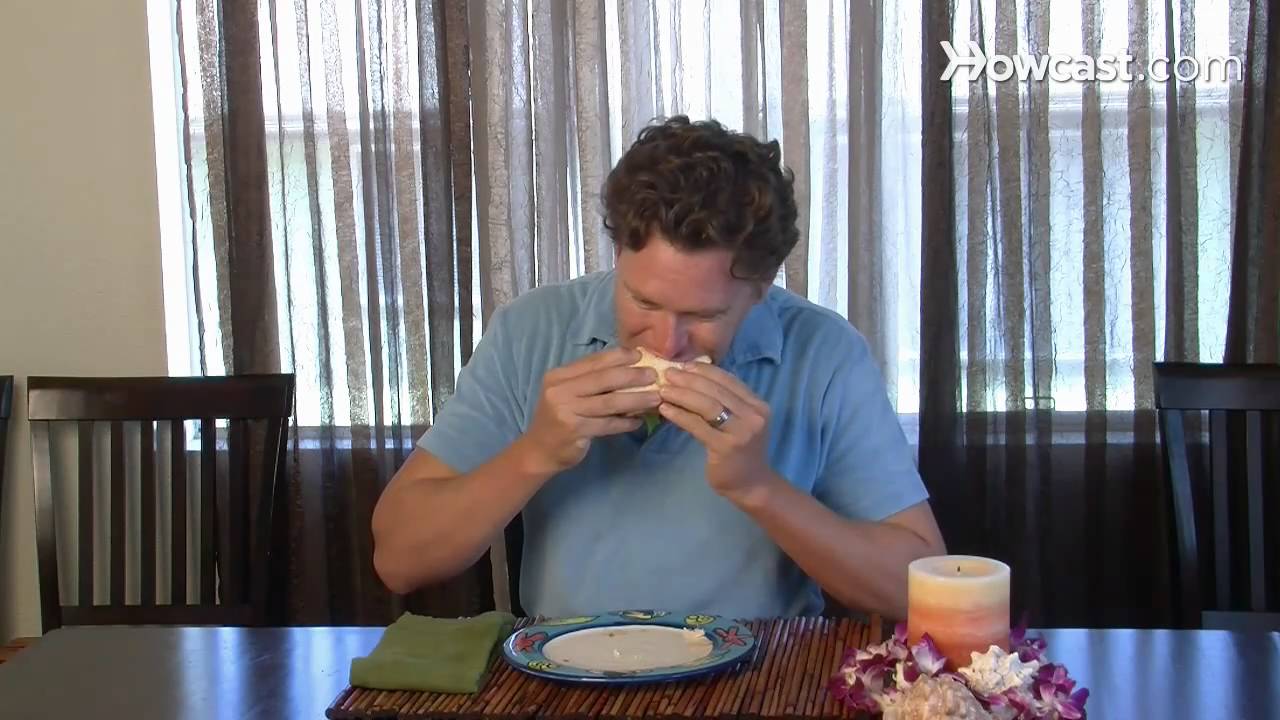Watch more How to Be Healthy videos: http://www.howcast.com/videos/418806-How-to-Lower-Your-BMI The body mass index, or BMI, is a tool used to assess your weight status based on your height. Use these tips to lower your BMI. Step 1: Decrease calorie intake Decrease your calorie intake by decreasing the amount of high fat foods you eat, and eating small amounts of unsaturated fats, which are good for your heart and help you to absorb fat-soluble vitamins. In order to create a calorie deficit, you have to eat fewer calories than your body uses. Step 2: Exercise portion control Exercise portion control. Too many calories from any source will be stored as body fat, so adjust your portion sizes so that you get an appropriate number of calories. Step 3: Eat fruits, vegetables, and whole grains Eat at least five servings a day of fruits, vegetables, and whole grains. These foods are loaded with healthy vitamins, and packed with fiber to keep you feeling full. Tip Pace yourself and eat slowly. It takes 10 to 20 minutes for your brain to get the message from your stomach that you’ve had enough to eat. Step 4: Eat a variety of foods Eat a variety of foods daily. Consult the Food Guide Pyramid at MyPyramid.gov to find and choose different foods within the various food groups multiple times each day. Step 5: Limit sugars and alcohol Limit your consumption of food with added sugar, such as soda, candy, and alcoholic beverages. They provide almost no necessary nutrients and are just empty calories. Tip Alcohol slows down the body’s use of fat for fuel by as much as 1/3, which means fat is more likely to be stored in your body. Step 6: Exercise Make exercise a priority. Get at least 30 minutes of light exercise every day. You’ll have more energy and you’ll be burning calories. Step 7: Develop a positive attitude Develop a positive attitude by setting realistic goals and focusing on fitness instead of weight. Pay attention to your body’s hunger and fullness cues, and only eat when you’re hungry — not when you’re bored or stressed. If your weight is a major concern, consult a doctor. Did You Know? To lose one pound of fat, you need to create a deficit of 3,500 calories.

How to Lower Your BMI
- Post author:
- Post published:May 17, 2021
- Post category:Uncategorized
- Post comments:0 Comments
You Might Also Like

Otorhinolaryngology Video – 2

Cardio VS. Strength Training (Part 1) (THE BIGGEST FITNESS MYTH)

Improve Endurance and Stamina in only 7 minutes a day

Meditation Video – 6

What makes muscles grow? – Jeffrey Siegel

FAQ 9: Can We Drink Water During Exercise? | Health & Fitness | Guru Mann
![Read more about the article Top 5 Vitamins to Build Muscle & Gain Weight [HD]](https://videos.drmaheshkumar.com/wp-content/uploads/2021/05/Top-5-Vitamins-to-Build-Muscle-Gain-Weight-HD-300x225.jpg)
Top 5 Vitamins to Build Muscle & Gain Weight [HD]

Pediatric Physiotherapy Video – 1

Oxygen, Antioxidants, and Free Radicals

Flexibility Stretching Video – 6

7 day weight loss diet plan

Biology – Role of hormones during puberty – English

GenFX Side Effects | GenFX Human Growth Hormone | GenFX Customer Reviews

What Happens When You Boil Urine

10 Basic Strength Exercises You Should Know

What makes muscles grow? – Jeffrey Siegel

Radiology Video – 2

What is GREEN EXERCISE? What does GREEN EXERCISE mean? GREEN EXERCISE meaning & explanation

Human Body, Body Building Muscle Building Anatomy Physiology Video – 8

Shuttle Sprints

Brain Disorders: Causes, Symptoms, and Diagnosis

Hematology Video – 1

Basketball Video – 3

7 Possible Reasons For An Enlarged Uterus

Orthopedic Nutrition Video – 2
Lat Pull Down-3

How to Treat Diarrhoea | Foods & Healthy Recipes

World’s Best Fish Oil – Omega 3 at CHEMIST SHOP | Cheapest | Guaranteed Results

Muscle Building Workout & Squats Video – 45

Fat Loss Weight Loss Video – 6

Finasteride WORKS – 3 Months Revealed

Dexa Scan Explanation

Geriatrics Video – 2

Egg Nutrition – Newest Information

Childhood Obesity Video – 1

Are Essential Amino Acids Safe?

Can we mix BCAA, Creatine, Glutamine in PRE WORKOUT DRINK? Info by Guru Mann

Can You Use Minoxidil on Your Beard? | Eric Bandholz

Metabolism Meaning

Food Digestion & Absorption Video – 2

Canoeing Video – 4

